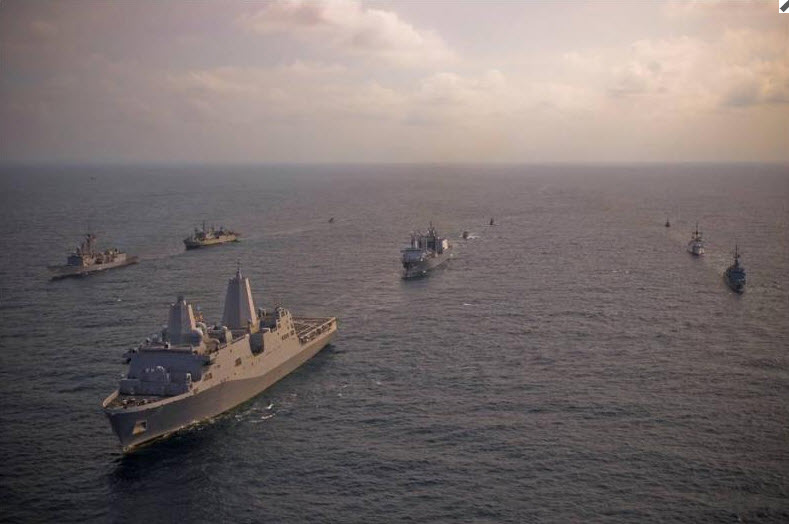One of the nice things about living in Panama is that it remains a protectorate and each year there are some very impressive war games that demonstrate the importance of the Panama Canal. Nothing like being able to park a bunch of war boats offshore to remind the bad boys that they mean business!
Here is the article that I read about this years war games by Marcos Ammati.
August 11th, 2014 (ISH) In January 2014, during a campaign designed to discredit the work done by the Multinational Forces-South (MNFS) in Panama, the terrorist group Brigada de los Mártires de Liberación (BML) posted pictures of what appeared to be MNFS soldiers beating and harassing civilians in the Buenaventura Area. They advocated these allegations via pamphlets, leaflets and flyers. Then in February, Panama and the United States Coast Guard captured a vessel with arms and explosives believed to belong to BML, who in response threatened to attack the Panama Canal. A few weeks later, the group kidnaped Non-Governmental Organizations Human Rights officials in New Centralia and initiated ship interdictions. Last June, the United Nations passed resolution 15080, authorizing U. S. lead MNFS to respond to these threats and actions.
New Centralia is a fictitious region and there was no threat to attack, or any damage done to the Panama Canal. The scenario presented above is part of a multinational exercise called Panamax, which focuses on the security of the Panama Canal and the surrounding region. This exercise is intended to prepare militaries from across the world, in the event that any of these scenarios actually occur.
“The exercise uses joint, combined and interagency operations to achieve holistic and integrated responses to transnational threats. The exercise reinforces strategic communication themes by stressing common interests, cooperative solutions, and long term security aimed at ensuring prosperity and democratic ideals. It is sponsored by U.S. Southern Command and is designed and executed by participating nations,” said Chief Warrant Officer John D. Toliver, J39 Information Operations Branch Chief. Panamax 2014 will run from August 8 -14.
Originally proposed by Chile, the first Panamax took place in 2003. It came to fruition through coordinated efforts between Chile, Panama, and the United States. Since then, this military exercise has grown significantly over the years with the participation and assets used from several countries.
The 2014 multinational force includes military personnel and integrated staff members from Brazil, Belize, Chile, Colombia, Costa Rica, the Dominican Republic, El Salvador, France, Guatemala, Honduras, Jamaica, Mexico, Nicaragua, Panama, Paraguay, Peru, and the United States, and cooperation from the United Nations and Conference of Central American Armies.
This year’s mostly-simulated exercise will include the use of a B-52 to support maritime detection and monitoring, the first time in three years a live military asset is employed during exercise scenarios.
The main purpose of Panamax is to make sure the partner nations are better prepared to work together if the Panama government ever requests help in protecting commercial traffic through the canal — the 51-mile waterway connecting the Atlantic and Pacific oceans — and ensure its neutrality.
“The combined maritime interdiction operations during the exercise provide the opportunity to share techniques, tactics and procedures and improve the capacity to function as a multinational force,” said Juan Chavez, of the Peruvian Navy.
Panamax is one of the largest multinational training exercises in the world and this year takes place at Mayport, Jacksonville, Fla. where more than 600 military personnel have traveled for the exercise, as well as locations in Texas, Miami, Mississippi and the Caribbean Sea. USSOUTHCOM and Marine Corps Forces South personnel, headquartered in Miami, as well as personnel at Navy Forces South in Mayport Naval Station, and Air Forces Southern at Davis-Monthan Air Force Base in Tucson, Ariz., are among the U.S. participants taking part in the exercise.
The Panama Canal is considered one of the most strategically and economically crucial pieces of infrastructure in the world. Six-percent of the world’s trade travels through the Panama Canal every year, accounting for roughly 400 million tons of goods. It is crucial to the free flow of trade worldwide, and the region’s economic stability is largely dependent on the safe transport of several million tons of cargo through the canal each year.
